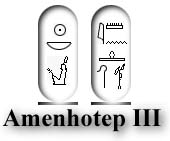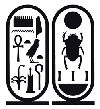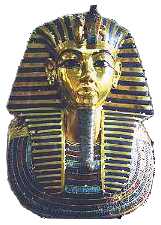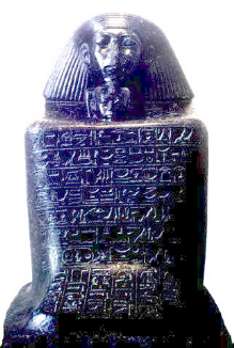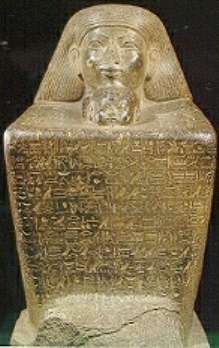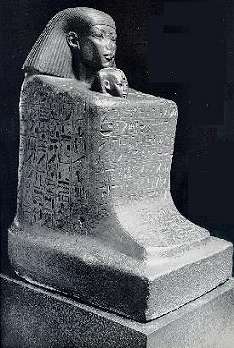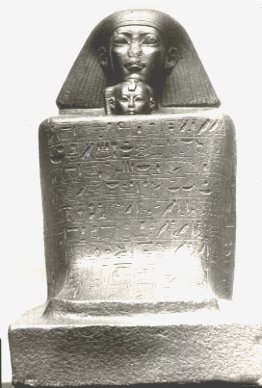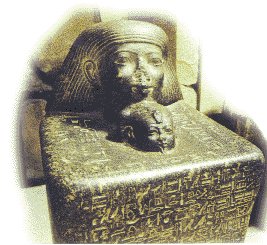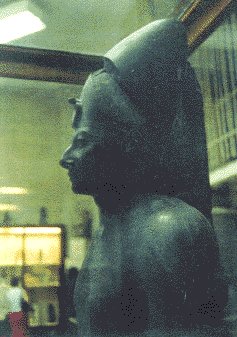|
Pharaoh |
Moses |
|
| Ahmoses (the moon is born) |
Founder of the 18th dynasty. Defeated the Hyksos and regained all Egypt. Initiated building work at Karnak | |
| Amenhotep I (Ammun is pleased) Tutmoses I |
Son of Amoses. | Aaron, brother of Moses is born (about 1533 B.C.) |
| This is the pharaoh who issued the decree that all the infant sons born to the Israelites were to be thrown into the river Nile, but that infant girls were permitted to live. (Exodus 1:22) | Moses born (about 1525 B.C.) and found in the Nile in Memphis (Ex
2:5-9) Moses named by Princess Nefure (Hatchepsut) (Ex 2:10). "Senmut" is another Egyptian name given to Moses when he came to live at the palace. |
|
| The third king of the 18th Dynasty Tutmoses I was a commoner by birth.
He had married Ahmose, a sister of Amenhotep I, and was named king when
the king died childless.
Tutmoses I had no sons, but was the father of Nefure (Hatshepsut), the princess who is the most likely candidate for having found Moses in the Nile. |
In Serabit El-Khadim there was erected a stele in the 11th year of
reign. It bears the image of Princess Neferure and it is to her,
oddly enough, that the regnal years are ascribed. She is accompanied by
her steward Senenmut [Moses], bearing a fan.
A.H.Gardiner, T.E.Peet and J.Cerny, The Inscriptions of Sinai, Part II (Oxford, 1955) pp.151-152. |
|
| First Pharaoh buried in the Valley of the Kings. | Moses was educated in all the wisdom of the Egyptians, and was powerful in speech and action. (Acts 7:22). Moses declines to become Pharaoh when Tutmoses I dies. (Heb 11:24) | |
| Tutmoses II
22 years - Moses |
Senmut/Tutmoses II (Moses) is groomed to become pharaoh. He is the architect of Deir El Bahri, the mortuary temple of Hatshepsut. | Another name for Moses: Hatshepsut Xnem Amen (offspring of Hatshepsut by the god Amen). |
Princess
Nefure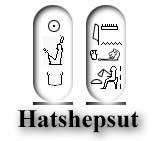 |
Daughter of Tutmoses I. It is thought she was about age fifteen when
her father died.
Hatshepsut married her half-brother, Thutmose II, who had a son, Thutmose III, by a concubine/minor wife (Mutnofret). Co-ruled with Tutmoses III who was only a child when Tutmoses II died. Tutmoses III was the illegitimate son of Tutmoses II (not a son of Hatshepsut). |
The last that we hear of Senenmut (Moses) is in year 16 of
Hatshepsut's reign.
Moses when 40 years old slays an Egyptian (Ex 2:12) and flees Egypt (Ex 2:15) because pharaoh (Moses replacement) wanted to kill him. |
| At Deir El Bahri, there is a wall which depicts the birth of the future heir to the throne, one scene shows a baby boy in the arms of Hatshepsut-the infant Moses! | Tomb No. 71 at Deir El Bahri was first of two tombs intended for Moses (Senenmut). Tomb No. 353 was the second, but work stopped when he fled Egypt, and the tomb remains unfinished. | |
|
In 1488, six years prior to her death, all official records of Hatshepsut ceased. |
After Moses leaves for Midian he is replaced by the half brother of Hatshepsut, whom she marries. The half brother takes over the title of Tutmoses II, which used to be Moses' title. | |
| Tutmoses III
Amenhotep II Pharaoh when Moses |
Assumed the position of Pharoah with the demise of Hatshepsut. (Moses was his competitor for the position of pharaoh). Tutmoses III was "The Napoleon of ancient Egypt and captured over 350 cities. | Moses in Midian |
| Hatshepsut's royal wall paintings in her mortuary temple at Deir el Bahri were defaced, and her statues were destroyed, because of the hatred Tutmoses III had for her and Moses. | Images of Senmut (Moses) also defaced by Tutmoses III, the childhood rival of Moses. | |
| Amenemhab mentions the month and the day of Tutmoses III death: "The last day of the third month of the second season ... He mounted to heaven, he joined the sun: the divine limbs mingled with him who begat him." According to James Henry Breasted, founder of American Egyptology, this translates to the 17th of March, 1450 BC. | Exodus 2:23 states: "During that long period, the king of Egypt died...". | |
| Tutmoses IV
Pharaoh of the Exodus |
Pharaoh of the Exodus. He was not a first born son, or else he would
have died in the tenth plague too.
He was the second born son of Amenhotep II. The Dream Stela of Thutmose IV, found between the front paws of the Sphinx, indicates he was not the firstborn legal heir to the throne, that he killed his firstborn brother to take the crown. The stele was used to legitimize the murder by claiming it was directed by the Sphinx in a dream. Thutmose IV/Amenhotep III may have perished with his army while pursuing Moses into the Red Sea. (Ex 14:27-28, Psa 136:15) |
Moses returns (Ex 4:19) after 40 years in Midian (Acts 7:30) and leads
Israel out of bondage after the first born of Egypt dies at Passover. (Ex.
12)
Destruction of Jericho at about 1407 BC. According to "New Bible Evidence" by Sir Charles Marston, the scarab and pottery found in Jericho indicate it was destroyed at the time of Amenhotep III. |
| Tutankaten Tutankamun
|
In an inscription on a statue of a lion dedicated by Tutankhamen to the temple of Soleb, he calls Amenhotep III his father. |
First born son of Pharaoh struck dead
by the 10th plague of God! |
| Supposedly reigned from an age of only 9 until his death at about 18.
Dies "mysteriously". Actually was only the heir apparent to the throne
(Crowned Prince) that may have co-reigned with his father in his later
years.
Tomb found in the Valley of the Kings by Howard Carter in 1922, said to be a "cursed" tomb. His burial looks rushed, and in a tomb generally too small - not designed for a reigning pharaoh's burial. |
||
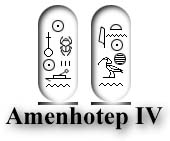 Akhenaten |
Akhenaten abruptly abandons the worship of the previous gods of
Egypt.
Amenhotep IV changed his name to Akhenaten, symbolizing the change from Amun worship to monotheistic Aten (Sun) worship. (Moses showed the former gods of Egypt to be powerless, hence the change to monotheism) Shifted his capital from Luxor to a new capital Akhetaten. His wife was the famous Nefertiti which means 'maiden of joy'. |
In a song written by Akhenaten to his god, there are seventeen verses which correspond with Psalm 104. |
